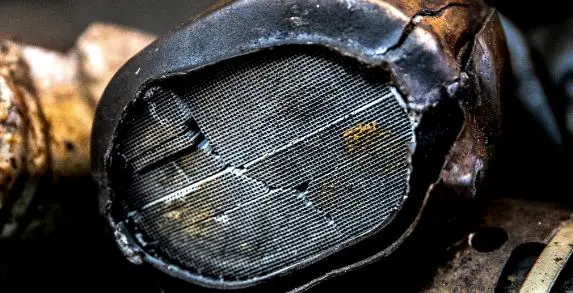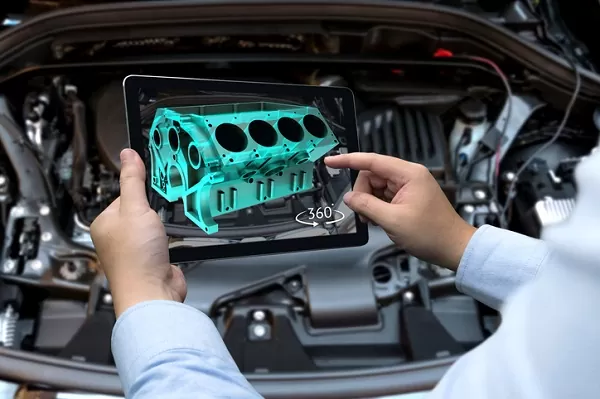Rhodium is a rare metal that is often used in catalytic converters. Catalytic converters are important for reducing emissions from cars, and they contain small amounts of rhodium to help with this process. Rhodium is a valuable metal, and it can be worth a lot of money when it is scrapped.
In this blog post, we will discuss the amount of rhodium in catalytic converters and its value on the scrap market. We will also explore if its possible to extract rhodium from old catalytic converters.
What Types Of Precious Metals Are Found In Catalytic Converters And Why?
Precious metals are often used as catalysts because they can speed up chemical reactions while remaining chemically stable themselves. The three most common precious metals used in catalytic converters are platinum, palladium, and rhodium.
Platinum is the most active catalyst and is effective at reducing emissions from both gasoline and diesel engines. Palladium is less active than platinum but has a lower cost, making it a popular choice for use in mass-produced vehicles.
Rhodium is the least active of the three precious metals but has the highest resistance to poisoning, making it useful for certain types of engine applications.
The use of precious metals in catalytic converters helps to reduce harmful emissions from vehicles, making them an important part of protecting the environment.
What Is Rhodium?
Rhodium is a transition metal that is incredibly rare, expensive, and durable. It has a silvery white color and is often used in jewelry and other high-end products. Rhodium is also used as a catalyst in many chemical reactions.
Rhodium was discovered in 1803 by English chemist William Hyde Wollaston. Wollaston found it while studying a sample of platinum ore. Rhodium is named after the Greek word for rose, rhodon. This is because of its rose-like colour.
Rhodium is found in South Africa, Russia, and North America. It is often mined as a by-product of other metals, such as copper and nickel. Rhodium is very difficult to extract from ore, which makes it quite expensive.
This metal has many unique properties that make it valuable for a variety of industrial and consumer applications. Rhodium is extremely resistant to corrosion, making it ideal for use in corrosive environments. It also has a very high melting point and is reflective, making it perfect for use in mirrors and other optical applications.
Rhodium is also used as a catalyst in many chemical reactions , such as those that happen inside a cars catalytic converter.
How Does Rhodium Work Inside A Catalytic Converter?
Rhodium is a precious metal that is used in catalytic converters to help reduce emissions. It works by helping to convert harmful pollutants into less harmful substances. Rhodium is very effective at this, which is why it is used in many different types of catalytic converter. There are two main types of rhodium-based catalytic converter: flow-through and honeycomb
Flow-through converters are the most common type, and they work by passing exhaust gases through a chamber that contains rhodium. Honeycomb converters are less common, but they are more efficient at reducing emissions.
They work by passing exhaust gases through a honeycomb-shaped structure that contains rhodium. Rhodium is a very effective way to reduce emissions from cars, and it is used in many different types of catalytic converter
What Is The Value Of Rhodium?
The value of rhodium per gram as of 2022 is about $495.12, or about $16,000 per ounce. This makes it one of the most expensive precious metals. The high price is due to its rarity and its unique properties. Rhodium is a metal that is resistant to corrosion and has a very high melting point.
The high price of rhodium is also due to its limited supply. There are only a few mines that produce this metal and most of it is produced in South Africa. This means that the supply is very tight and the price is likely to continue to rise in the future.
How Much Rhodium Is In A Cars Catalytic Converter?
So how much rhodium is actually inside a car’s catalytic converter? Well, that all depends on the size and make of the vehicle. The average amount of rhodium found in a car’s catalytic converter is between three to four grams. However, some larger SUVs can contain up to eight grams of rhodium. That’s a lot of valuable metal just sitting in your car.
Which Types Of Cars Contain The Most Precious Metals Inside The Catalytic Converter?
The amount of precious metals inside a converter can vary depending on the make and model of the car. For example, newer cars tend to have more platinum in their converter than older models.
So, which types of cars contain the highest amount of precious metals? Here are a few examples:
-The Mercedes-Benz S600 has a catalytic converter that contains around $400 worth of palladium.
-The Audi A8 L W12 quattro has a converter with $700 worth of platinum.
-The BMW 760iLi contains a converter with $1300 worth of rhodium.
As you can see, there is a wide range of values when it comes to the amount of precious metals inside a car’s catalytic converter
Can You Recover Value From An Old Catalytic Converter?
There are many reasons why people use scrap catalytic converters to recover value from the precious metals inside. Even a small catalytic converter can contain a lot of value.
Another reason people scrap catalytic converters is that the process of extracting precious metals is relatively simple. All you need is some basic equipment and chemicals, and you can do it yourself. This makes it a great option for people who want to make some extra money.
So if you have a catalytic converter sitting around, don’t throw it away! You could be sitting on a gold mine. Scrap it and reap the rewards!
How To Get Rhodium Out Of A Catalytic Converter
There are a few ways that you can extract the rhodium from your old catalytic converter. One way is to use a process called aqua regia, which involves using a mixture of hydrochloric and nitric acids. This method is effective, but it can be very dangerous if not done properly. Another way to extract rhodium is to use a process called electrolysis, which involves passing an electric current through the catalytic converter. This method is also effective, but it can take longer than aqua regia.
It is possible to extract rhodium from a catalytic converter yourself, but it is not recommended unless you have the proper equipment and knowledge. The process is very dangerous and can release harmful chemicals into the air if not done correctly.
It is much safer and easier to take your catalytic converter to a professional scrap recovery service that specializes in extracting metals. They will have the proper equipment and expertise to safely remove the rhodium without harming themselves or the environment.
Go Home











